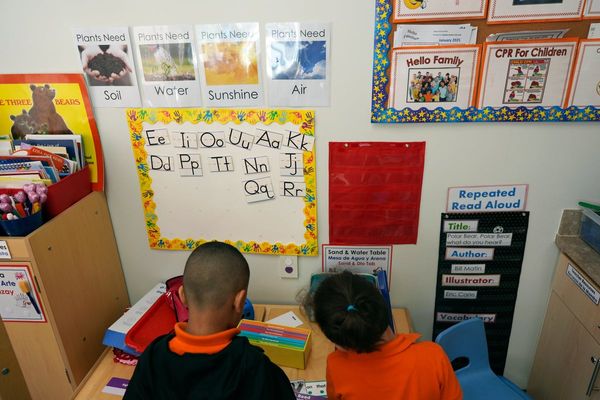
The fact that RBA governor Phillip Lowe is copping a rollicking pile-on complete with calls to resign is hardly surprising – this is the first big escalation in interest rates since the RBA became independent and since household debt went above 100 per cent of income.
These things both happened in the mid-1990s and made interest rates a very big deal and entirely the fault of the RBA and its governor for the first time – so cop it, he must.
Now household debt is 200 per cent of income, one of the highest in the world, house prices have increased six-fold, and the Treasurer Jim Chalmers has hung Dr Lowe on the line to dry, reminding everyone most days that he’s independent.
Lose-lose situation
In Senate Estimates last week, Dr Lowe defended his use of the interest-rate mallet with the word “inequality”.
“High inflation is damaging and corrosive,” he said. “It increases inequality and hurts people on low incomes the most.”

So let’s talk about inequality.
The first thing is that inequality is worsened by the responses to both low inflation and high inflation; it’s a lose/lose.
When it was too low after the GFC, and the cash rate was cut to 0.75 per cent before the pandemic and then 0.1 per cent in 2020 to try to get inflation up to the 2 to 3 per cent target band, that resulted in a huge increase in asset and land prices, enriching the already rich.
Now the rapid lift in interest rates from 0.1 per cent to 3.35 per cent, and counting, to get inflation down to the 2 to 3 per cent target, is worsening inequality because the indebted are struggling to make repayments and are becoming the working poor.
And as Dr Lowe implied, rising consumer prices themselves tend to hurt the poor more because their income is more likely to be fixed, and they spend a greater proportion of it on essentials.
But rising inequality has to do with a lot more than inflation, which has a relatively small, temporary effect.
There’s no better way to illustrate this than with Philip Lowe himself, in the context of the history of the RBA.
Dr Lowe’s salary in 2022 was $911,728 pa, which was one-eighth of the $7 million base salary, before bonuses, of Matt Comyn, CEO of Commonwealth Bank, from which the RBA was created. (CBA used to be Australia’s central bank until the RBA was spun out of it in 1959).
In 1992, when the Commonwealth Bank was eventually privatised, the salary of its CEO, David Murray, was a little more than $400,000, up from the $300,000 of his predecessor, Don Sanders.
By the way, those amounts would be $850,000 and $640,000 today, adjusted for inflation, not $7 million.
The salary of the RBA governor, Bernie Fraser, in 1992 was $290,000, about the same as Sanders’ wage and three-quarters of David Murray’s, not the one-eighth of Matt Comyn’s it is today.
And finally, in 1992, the RBA governor’s salary was eight times average weekly earnings while the Commonwealth Bank CEO’s salary was 11 times. Today, it’s 10 times AWE for Philip Lowe’s and 76 times for Matt Comyn’s.
The real ‘inequality’
Does Matt Comyn work any harder than David Murray did, or Philip Lowe does now? Definitely not. And although Comyn has added $50 billion in value to CBA since he took over in April 2018, not much of that was his doing, and Murray arguably created more value by setting up the bank’s transition from public to private.
In any case, does Matt Comyn need to earn as much per month as David Murray and Bernie Fraser made per year between them to keep the wolf from his family’s door? Of course not.
So the big question about inequality is not the temporary impact of today’s inflation, but what caused/allowed the huge, “corrosive” escalation in CEO salaries over 30 years, which has underpinned the growing and now permanent gap between incomes at the top and those in the middle and bottom.
In my view, an important, but unheralded, contributor to the escalation of executive salaries has been the reduction in the top marginal income tax rate, from 67 per cent before 1972 to 49 per cent in 1987.
High tax rates drastically reduced the ability of the well paid to accumulate wealth and also meant there was little point giving them big pay rises, since it would be mostly confiscated by the state.
Executives simply didn’t ask for big pay rises for that reason, so more of a company’s salary pool flowed to lower-paid workers.
When the top tax rate fell below 50 per cent, executives rolled up their sleeves and went for it – and won big.
But didn’t such high marginal tax rates in the old days crush incentive and reduce economic growth? After all we’ve been told – basically for 30 years – that capitalism requires us to promote growth by freeing the animal spirits of entrepreneurs by cutting their taxes.
Well, let’s look at some facts.
Federal income taxes were introduced in Australia in 1915. Between the end of the gold rush and 1915, annual per capita GDP growth in Australia was 1.1 per cent, on average (during the gold rush it averaged 7 per cent a year!).
Between 1915 and 1950, with income taxes, growth increased to 1.3 per cent per annum, and then between 1950 and 1972, when the top marginal tax rate hit 75 per cent and averaged 67 per cent for 15 years, per capita growth positively boomed – an average of 2.5 per cent.
From 1972 to 1987, when the top income tax rate was cut to 60 per cent, growth stalled, averaging 1.9 per cent, and in the years since 1987, when the tax rate was cut further to 49 per cent and then to 45 per cent, average growth has been stuck at 2 per cent a year.
The lower taxes myth
There are many other factors at work, of course, but it is perfectly clear that there is no obvious economic benefit from lower taxation, and if anything, the reverse applies.

Why is that? Well, that seems pretty obvious to me: Education and health care are far more important to economic growth than how much money the professional and business classes get to keep of what they make.
I doubt this information will ignite a light bulb above any political head, followed by the return of a 67 per cent top marginal income tax rate.
In fact, the Labor government has even promised to keep the Coalition’s Stage 3 tax cuts, which make the tax system less progressive, not more, so even Labor is on board with the myth that lower taxes promote growth.
But Philip Lowe has raised the concept of inequality, and he should keep at it.
And Jim Chalmers has raised the idea of “values-based capitalism”, and the most important expression of that is in the tax system. Chalmernomics will mean nothing if income tax is not made more progressive, rather than less.
Alan Kohler is founder of Eureka Report and finance presenter on ABC news. He writes twice a week for The New Daily







